"A time there was, not so long ago, when the American painter most widely admired in Europe was Mark Tobey."
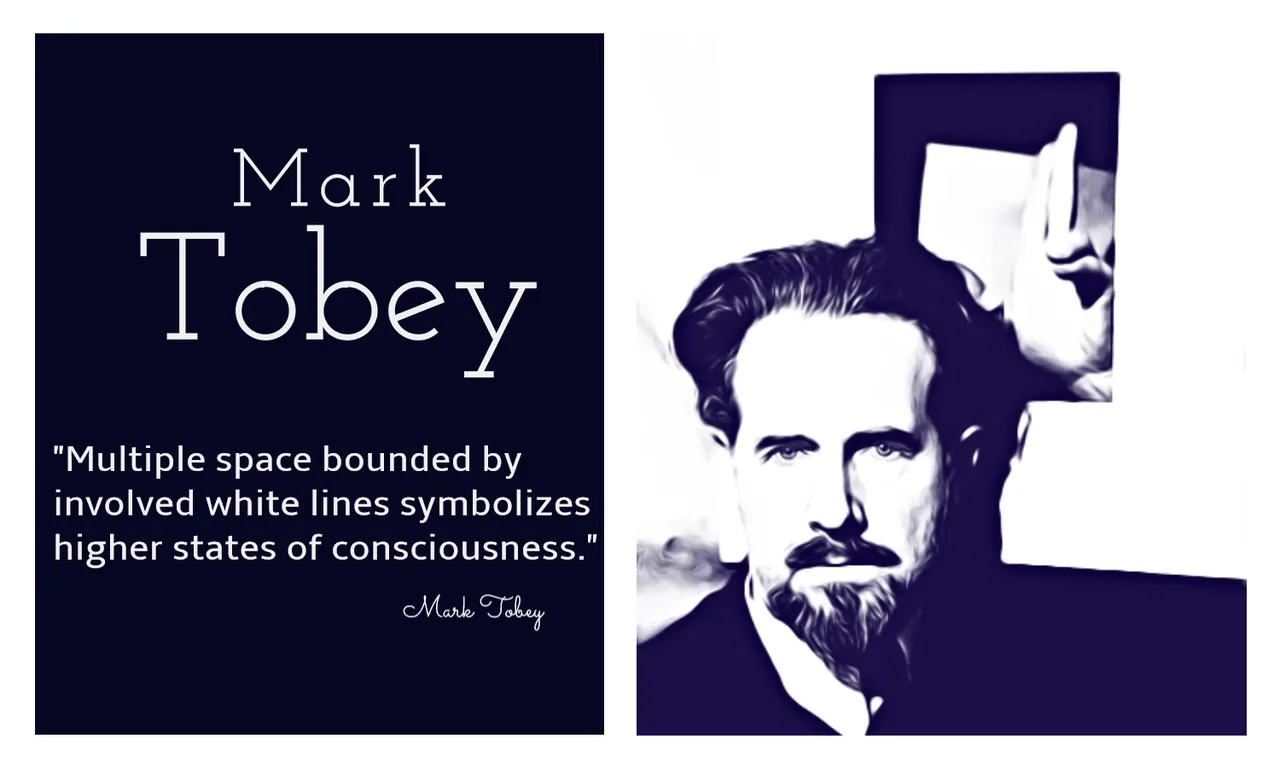
The above sentence was the opening line in a retrospective New York Times article about him in 1984. It wasn’t just Europe, he was also known to art lovers in America, for example, he appeared three times (1953, -57, and -59) in LIFE magazine. In the early age of TV, prior to the Internet, LIFE was a weekly magazine which reached tens of millions of people.
Indeed in the 50s and 60s when the music of Miles Davis, John Coltrane, and Dave Brubeck was enthusiastically embraced by Europeans, Mark Tobey was riding the same wave in the art world. This despite the fact that he was by nature quiet and reclusive, and for the most part eschewed the New York art scene – instead he traveled the globe to work and learn.
From the International Art Magazine Apollo
In 1958, alongside Rothko, he represented the USA at the 29th Venice Biennale where his painting Capricorn was awarded the City of Venice painting prize. Not since Whistler’s Little White Girl – Symphony in White, No. 2 triumphed at the first biennale in 1895, had an American artist won the gold medal. Three years later, a major retrospective of Tobey’s work was held at the Pavillon de Marsan in the Louvre, an unprecedented achievement for a living – and American – artist. One French critic wrote in 1952 that Tobey’s importance could ‘never be stressed enough,’ describing him as one of ‘those all too rare individuals of authentic value.’
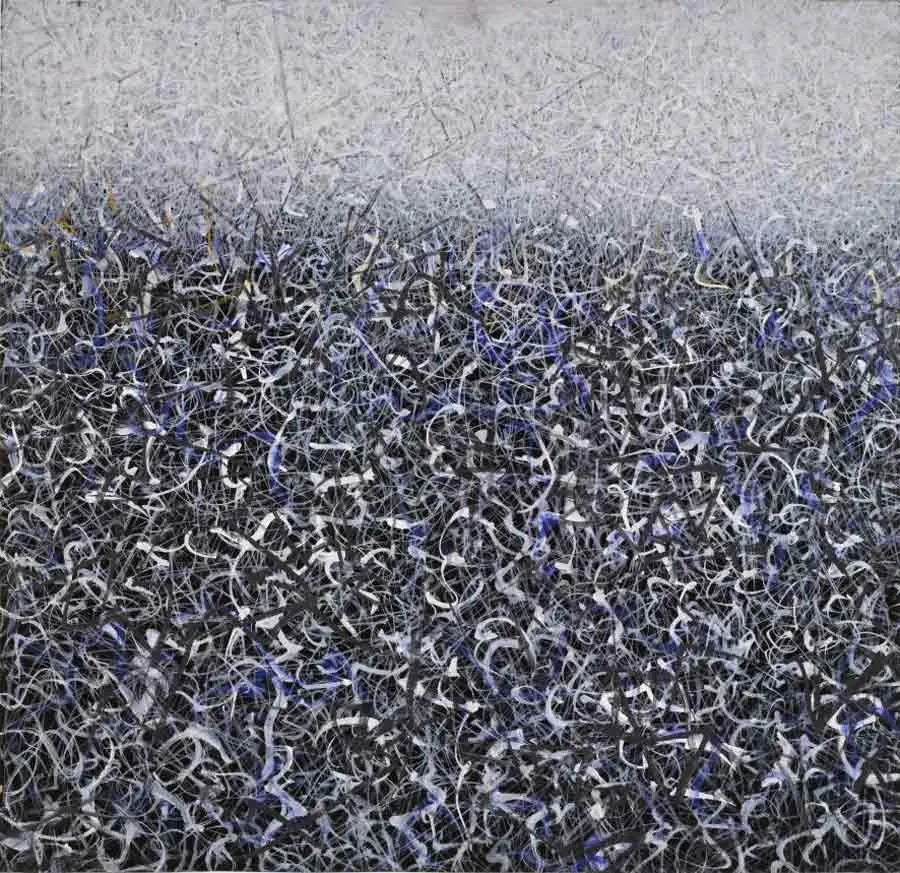 Mark Tobey, Campo
Mark Tobey, Campo
Mark Tobey has been called the father of Abstract Expressionism, but it’s probably more accurate to note that his art is visually similar to that style and predates it, but his approach, philosophy, and inspiration were unlike most abstract expressionists. His inspiration came from light, balance, harmony, contemplation, consciousness, inner-space, and unity.
His was born in 1890 and grew up in Chicago, where as a teenager he attended the Art Institute of Chicago for a couple of years – although he was essentially self taught. At the age of 21 he moved to New York City and became a fashion illustrator for McCall. One of his close friends related an interesting story (on this video) that I couldn’t find in print.
Tobey had a courier job delivering packages and when he was in the fashion department at McCall magazine, he looked at the illustrations around the office and said, “I can do better than that.” An editor gave him a pad and pencil and said, “Let’s see.” He gave him a job and Tobey later said it almost killed his art career because he was making such a good living as a fashion illustrator.
He eventually moved on and worked for a while with some success as a portraitist, and had his own show in lower Manhattan in 1917.
A Life Changing Encounter
In the same New York Times article quoted above the writer noted that Mark Tobey:
… was known to be a follower of the Bahá’i Faith, and when he told people that he was striving for what he called ''dimensionless dimension'' they looked at the paintings in question and found them the very epitome of sublimity…
The story of how that came about has an interesting connection to my previous post on Juliet Thompson and Khalil Gibran. In 1918 Mark Tobey met Juliet Thompson, another portraitist, and sat for her in her Greenwich Village studio pictured here.
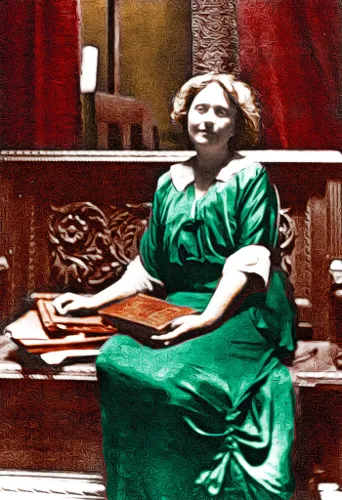 Juliet Thompson in her studio.
Juliet Thompson in her studio.
While there Tobey read some Bahá’i literature and after expressing interest she invited him to a lecture at a Bahá’i retreat in Maine, at which he decided to embrace the Bahá’i Faith. This, along with his study of Asian, Persian, and Arabic calligraphy were pivotal events in his artistic development.
Mark Toby in His Own Words
I have been influenced by the Baha'i religion which believes there has been but one religion which renews itself under different names. The root of all religions, from the Baha'i point of view, is based on the theory that man will gradually come to understand the unity of the world and the oneness of mankind. It teaches that all the prophets are one - that science and religion are the two great powers which must be balanced if man is to become mature. I feel my work has been influenced by these beliefs. I’ve tried to decentralize and interpenetrate so that all parts of a painting are of related value. Perhaps I‘ve hoped even to penetrate perspective and bring the far near. Mine are the Orient, the Occident, science, religion, cities, space, and writing a picture.
Some critics have criticized me for being what they called an Orientalist and for using Oriental models for my work. But they were wrong. Because when I was struggling in Japan and China with Sumi-ink and the brush, trying to understand the calligraphy of the Far-East, I became aware that I would never be anything other than the Westerner that I am. But what did develop there was what I call the calligraphic impulse that has opened out new horizons for my work. Now I could paint the turmoil and tumult of the great cities, the intertwining of the lights and the streams of people caught up in the mesh of their net.
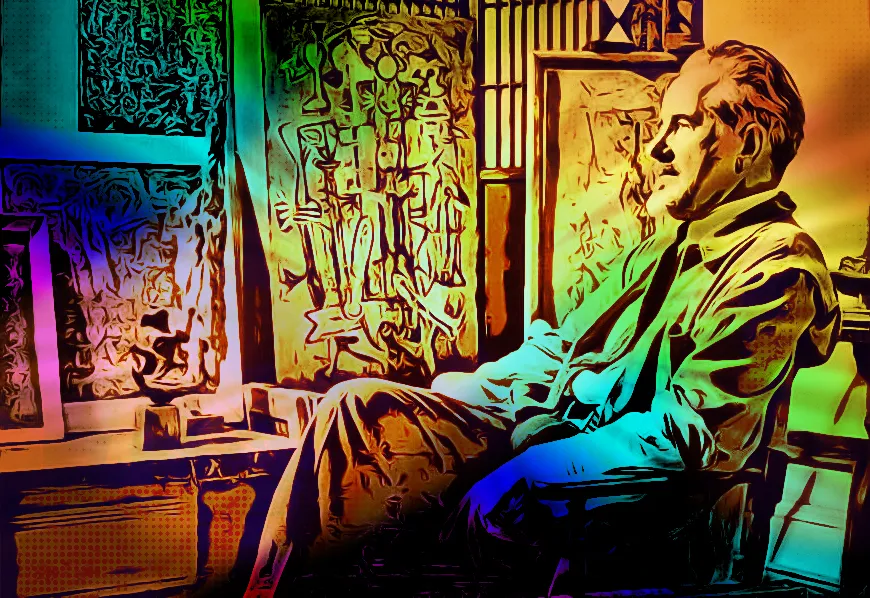
Original b/w photo of Mark Tobey in his studio (1949). Courtesy Arthur Lyon Dahl. Photo by Larry Novak, effects by @roused
Mark Toby in His Own Words on Art and Technique
Over the past 15 years, my approach to painting has varied, sometimes being dependent on brush-work, sometimes on lines, dynamic white strokes in geometric space. I have never tried to pursue a particular style in my work. For me, the road has been a zigzag into and out of old civilizations, seeking new horizons through meditation and contemplation. My sources of inspiration have gone from those of my native Middle West to those of microscopic worlds. I have discovered many a universe on paving stones and tree barks. I know very little about what is generally called “abstract painting”.
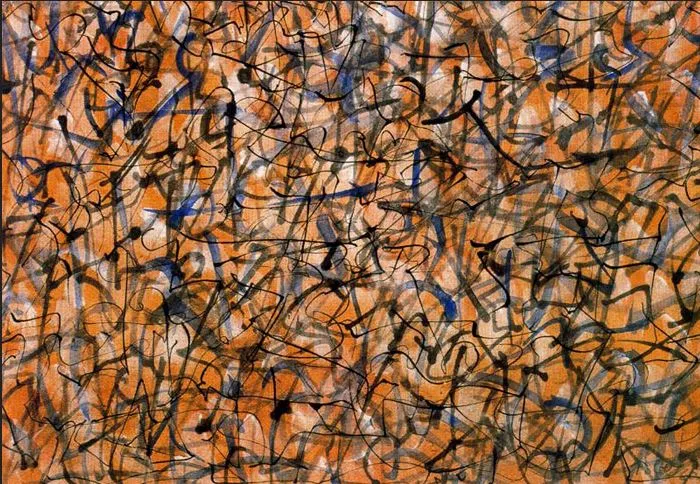
Mark Tobey
Pure abstraction would mean a type of painting completely unrelated to life, which is unacceptable to me. I have sought to make my painting “whole”, but to attain this I have used a whirling mass. I take up no definite position. Maybe this explains someone’s remark while looking at one of my paintings: “Where is the center?”
I try to make of each picture a world in itself, and perhaps this one seems uninteresting however much one looks at the variations in the relations of lines and in the accents of touch which I have used in the center. A much vaster world can be found here than would appear at first glance. The use of many entwining rhythms indicates my search for height and depth. One must search while one is contemplating or else there will be no reward.
The cult of space can become as dull as that of the object. The dimension that counts for the creative person is the Space he creates within himself. This inner space is closer to the infinite than the other, and it is the privilege of a balanced mind - and the search for an equilibrium is essential - to be as aware of inner space as he is of outer space.
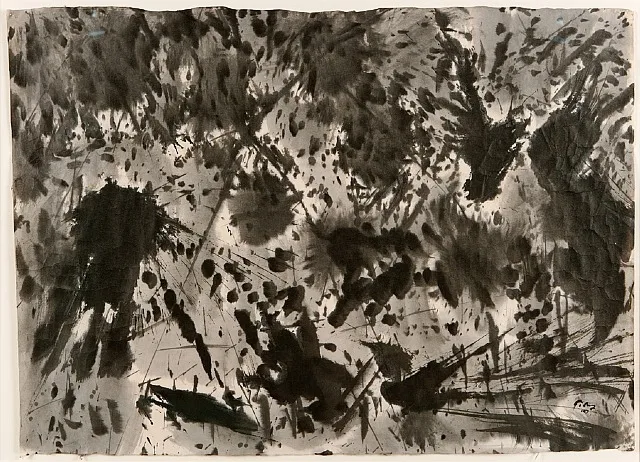
Mark Tobey, Sumi
The development of my work has been I feel more subconscious than conscious. I do not work by intellectual deductions. My work is a kind of self-contained contemplation.
People say I called my painting „white writing“. I didn’t. Somebody else did. I was interested in an idea - why couldn’t structures be in white? [...] I painted them in white because I thought structures could be, should be light. What I was fundamentally interested in at the time was light.
Since I try to make my paintings organic, I feel that there is a relation with nature. In Drift of Summer for instance, I wanted to experience through the medium of paint a feeling of the movement of grass and floating seeds. To achieve the rhythmic impact of such I had to build the body of painting by multitudinous lines.
Mark Toby in His Own Words on Music
(He studied music and collaborated with musical theorist and composer John Cage.)
When I play the piano for several hours, everything is clarified in my visual imagination afterwards. Everything that exists, every human being is a vibration.
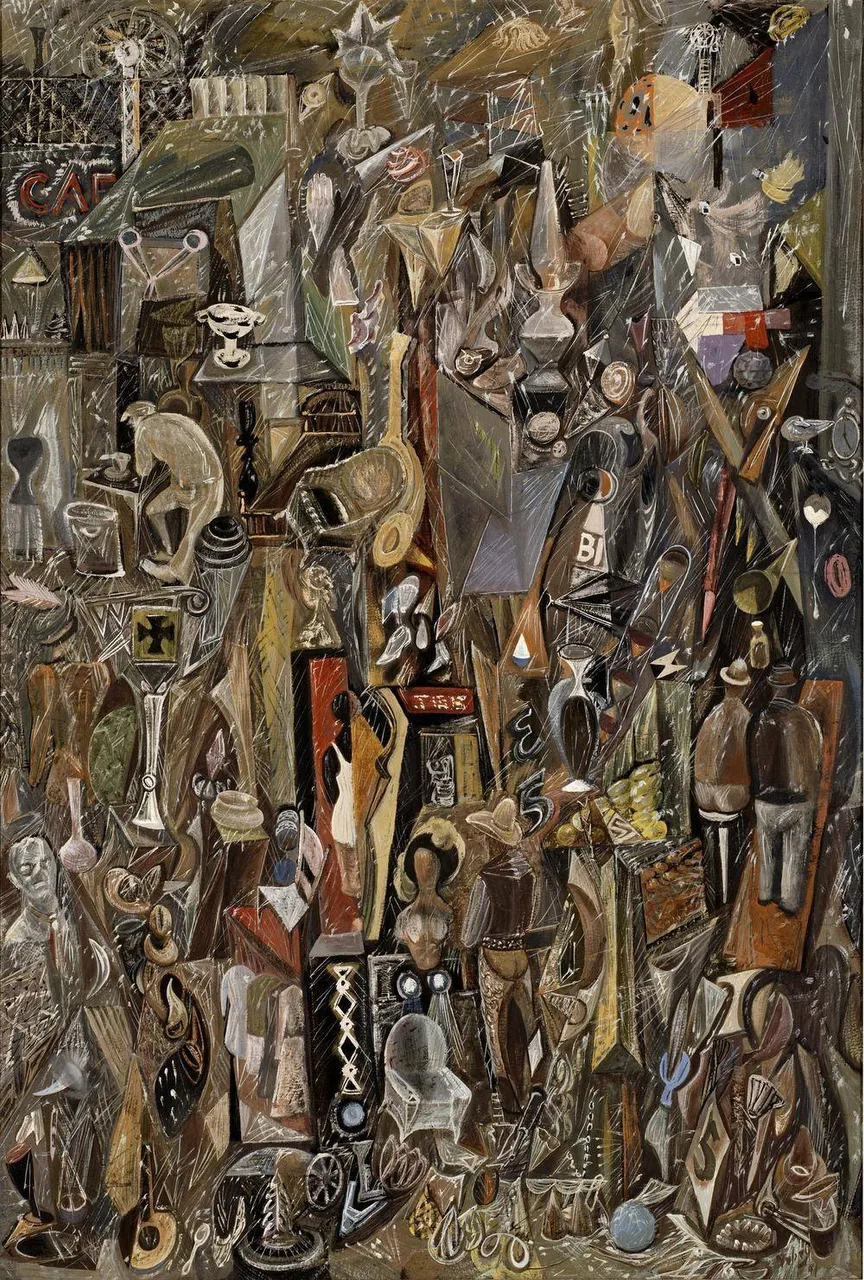 Mark Tobey, Rummage
Mark Tobey, Rummage
I have used some of the identical forms in improvisation similar to the musicians using a motif by earlier or contemporary musicians. I did not have any specific painting in mind, rather more or less the feeling of these paintings upon and into which I built a modern complex structure.
I often think of Chopin when I work. From time to time I have ideas, sometimes I don’t have any at all. Ideas come to me in the course of my creative work. A composer, once he has as his point of departure a series of sounds he can compose an entire symphony.

Brief video with paintings from Mark Tobey
White Writing
White writing is perhaps the best known aspect of Mark Tobey’s art. This description, and for that matter the article in “Art and Antiques Magazine,” is the best I came across:
Though many of art criticism’s standard phrases are more than a little awkward, “white writing” makes a good if not a perfect fit with Tobey’s quietly shimmering imagery. Strictly speaking, his thin streaks white paint are brushstrokes, yet they perform none of the brushstroke’s usual tasks. They neither generate an image of an object in pictorial space (as in realist painting) nor do they convey some personal attitude or quality of feeling (as in, for example, Abstract Expressionism). Closely spaced and often connected by angular zigs and zags, Tobey’s marks seem at once precise and utterly spontaneous. Filling the surface of a canvas edge to edge, his “white writing” creates a web one would call dense if it were not so airy. Filled with subtly modulated space, Tobey’s paintings are unquestionably pictorial, as are the marks of his brush. These works are in no sense written. Yet one senses in their linear inflections the artist’s lifelong immersion in calligraphy, and that justifies to some extent the critics’ talk of “white writing.” link

Brief but insightful video about Mark Tobey
Mark Tobey resided for many years in the Pacific Northwest and is considered one of the four founders of the Northwest School. In the 1960s he emigrated to Europe where he lived quietly with his partner in a modest home in the historic section of Basel, Switzerland, passing on there in 1976 in his 85th year.
If you'd like to learn more / Credits / Resources
This video linked, but not embedded above, is an older regional television program with interviews of some close personal friends of Mark Tobey who admit to being "artistic illiterates." It gives a wonderful insight into him as a person and artist relating to everyday people. The quality is only marginal, but it you are interested in Tobey it is worthwhile.
The site cmt-marktobey.net is a great resource for those interested in Mark Tobey, with a wealth of quotes (it's where I got the quotes used above.) There are also print details about his life and work, it would be especially useful for anyone who owns a Tobey painting, or is considering purchasing one.
An insightful article I particularly enjoyed and quoted above was in the Art and Antique Magazine. link
Here's an article from the New York Times link
Here's an informative article from the International Art Magazine Apollo
Photos
First photo: Mark Tobey b/w original found on Pinterest. Effects & brochure by @roused
Original b/w photo of Mark Tobey in his studio (1949). Courtesy Arthur Lyon Dahl. Photo by Larry Novak, effects by @roused
Original b/w photo of Juliet Thompson in her studio is from www.thejourneywest.org colorized by @roused
Paintings by Mark Tobey, photos from Pinterest